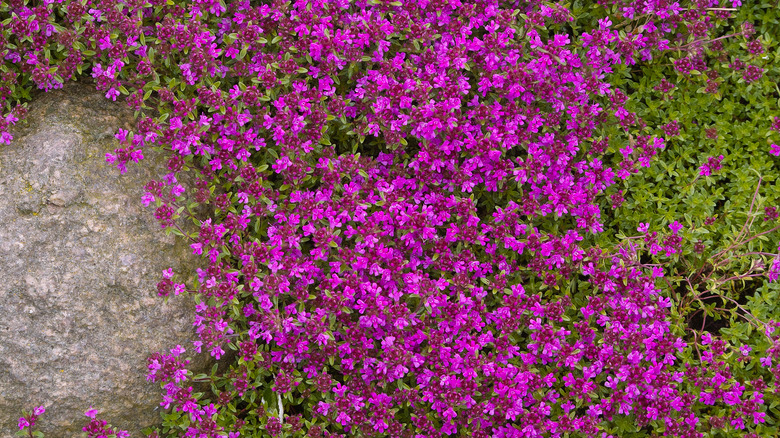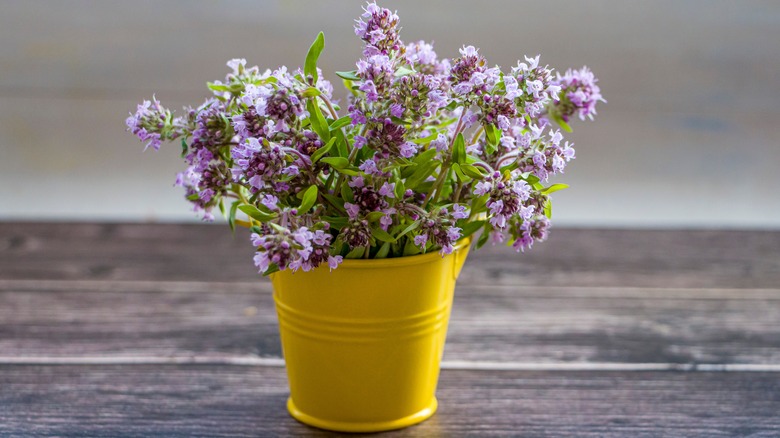Protect Creeping Thyme From Frost Damage With These Winter Care Tips
Creeping thyme (Thymus serpyllum) is a lovely, aromatic plant that's a true multi-tasker in the yard and garden. A close cousin to culinary thyme (Thymus vulgaris), the creeper's leaves are edible, but its tiny flowers and leaves make harvesting tedious. A better use for the creeping variety is as a ground cover. Where it grows over bare spots and thrives in rock gardens, it's drought and deer-resistant, and its brilliant pink blooms attract butterflies and other pollinators. When planted in a well-drained, sunny spot, creeping thyme will grow and spread while preventing weeds from taking root. It's a sturdy plant that holds up to gentle foot traffic, and if you step on it, the plant releases a mint-like scent. Because of its fast-growing nature, it's important to keep it trimmed and contained because if you allow it, thyme will spread into areas you have reserved for other plants.
Given all its benefits, you'll naturally want to keep the plant in good shape, so it continues to bloom every year. When winter comes, the best way to protect creeping thyme from front damage and protect the plant's shallow root system is to cover it with several inches of mulch – leaf mold works very well here.
Further winter care for creeping thyme
Creeping thyme is hardy in zones 4 through 9 and is semi-evergreen, so its leaves will stay green in winter, although some portion of the plant may die off in the coldest weather. You can tell how your thyme has reacted to a cold snap. If the root ball seems loose or the foliage has become dark and mushy, chances are you have frost damage. If your thyme has survived frost damage, carefully trim away any damaged parts of the plant in spring so it can bounce back. When it does, make plans to cover it with mulch the following winter, and you may want to add floating row covers or another material to protect it from frost.
If your creeping thyme is in a container, the way to protect it during the winter is to move the pot inside your house or garage to keep it from the coldest temperatures. During winter months, thyme in a pot or the ground needs less water than during the growing season, so be careful not to overwater.

